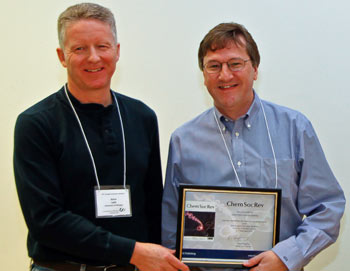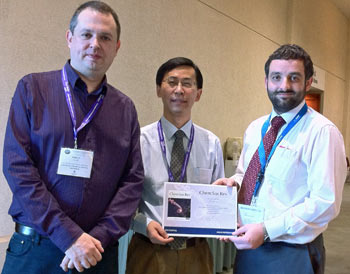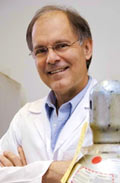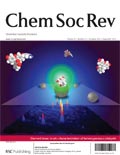 |
Our referees found these Chem Soc Rev articles particularly interesting. Download them and let us know if you agree. And if you like them, cite them. |
Multifunctionality in hybrid magnetic materials based on bimetallic oxalate complexes
Miguel Clemente-León, Eugenio Coronado, Carlos Martí-Gastaldo and Francisco M. Romero
Chem. Soc. Rev., 2011, 40, 473-497
Titanium oxo-clusters: precursors for a Lego-like construction of nanostructured hybrid materials
Laurence Rozes and Clément Sanchez
Chem. Soc. Rev., 2011, 40, 1006-1030
Kinetic subtleties of nitroxide mediated polymerization
Denis Bertin, Didier Gigmes, Sylvain R. A. Marque and Paul Tordo
Chem. Soc. Rev., 2011, DOI: 10.1039/C0CS00110D
Catalytic C–H amination: the stereoselectivity issue
Florence Collet, Camille Lescot and Philippe Dauban
Chem. Soc. Rev., 2011, DOI: 10.1039/C0CS00095G
Zebrafish as a good vertebrate model for molecular imaging using fluorescent probes
Sung-Kyun Ko, Xiaoqiang Chen, Juyoung Yoon and Injae Shin
Chem. Soc. Rev., 2011, DOI: 10.1039/C0CS00118J
Linking heterometallic rings for quantum information processing and amusement
Grigore A. Timco, Thomas B. Faust, Floriana Tuna and Richard E. P. Winpenny
Chem. Soc. Rev., 2011, DOI: 10.1039/C0CS00151A
Framework-structured weak ferromagnets
Dan-Feng Weng, Zhe-Ming Wang and Song Gao
Chem. Soc. Rev., 2011, DOI: 10.1039/C0CS00093K
Transition-metal catalyzed oxidative cross-coupling reactions to form C–C bonds involving organometallic reagents as nucleophiles
Wei Shi, Chao Liu and Aiwen Lei
Chem. Soc. Rev., 2011, DOI: 10.1039/C0CS00125B
Chemomechanics: chemical kinetics for multiscale phenomena
Zhen Huang and Roman Boulatov
Chem. Soc. Rev., 2011, DOI: 10.1039/C0CS00148A
















